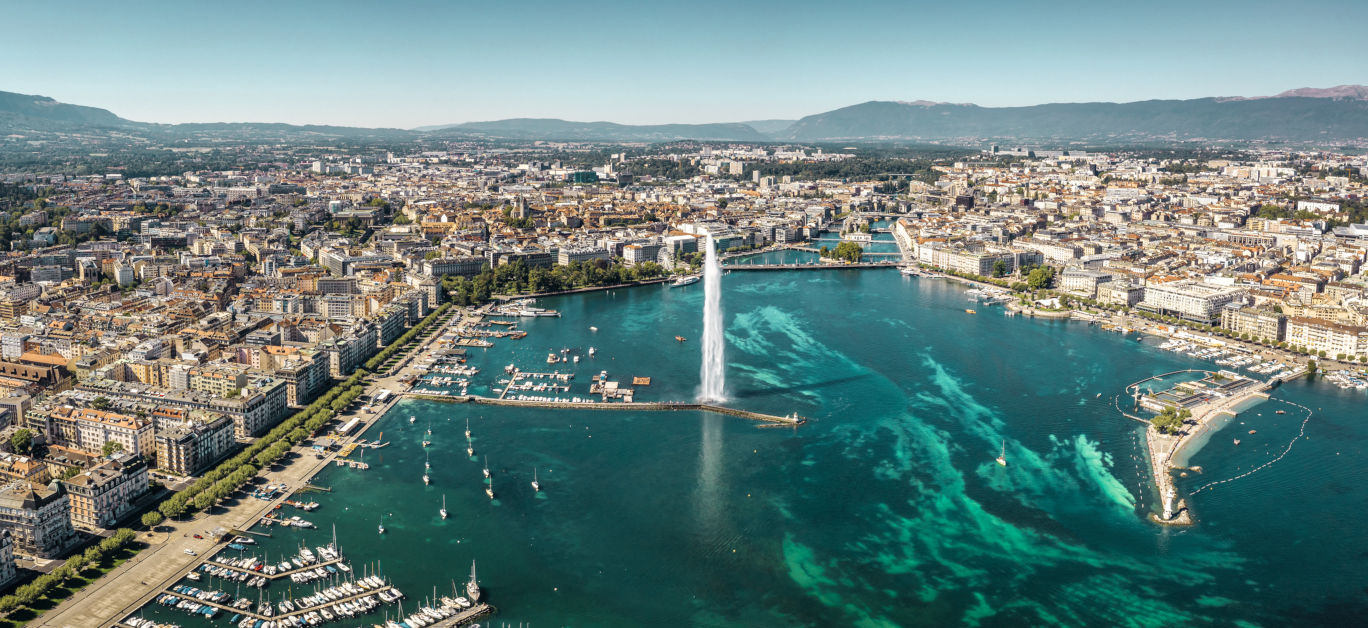Geneva, the second most populous city of Switzerland, is situated in Romandy, right on the spot where the sparkling waters of Lake Geneva meet the mighty river Rhône, and surrounded by the majestic Alps and the Jura mountains it is simply unforgettable.
A truly global metropolis, a financial hub, and the international heart of diplomacy, Geneva hosts the headquarters of the European branch of the United Nations and the International Committee of the Red Cross. In 1949, the Geneva Conventions, which focus on the welfare and protection of prisoners of war, wounded participants and innocents caught up in conflict, were signed in this tranquil city.
Geneva, known as the city of peace, is one of the greenest cities in Europe, and provides a very high quality of life for its fortunate residents. To appreciate the stunning beauty of this cosmopolitan city, I took a stroll along the quays of Lake Geneva and admired the view of the Jet D’Eau, a spectacular fountain, which pumps gallons of water soaring up to 453 feet into the Swiss air.
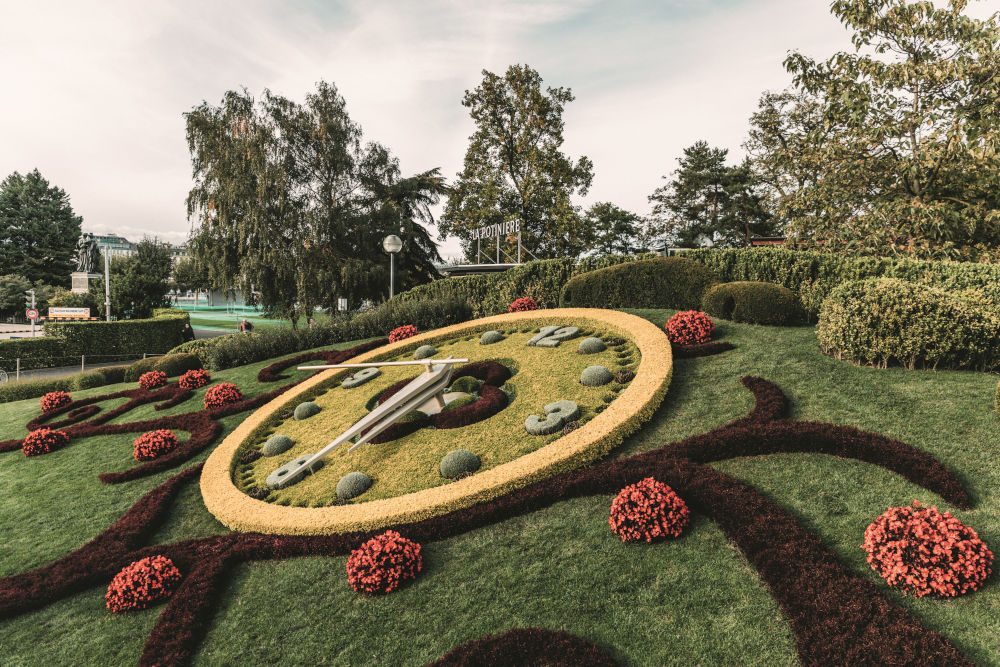
I made my way to the English Garden at the foot of the Mont Blanc Bridge and was amply rewarded with a view of the flower clock, which, as expected, keeps perfect time.
For an insight into Geneva’s reputation as a city of peace, I visited the International Red Cross and Red Crescent Museum on Avenue de la Paix and observed the Humanitarian Adventure, a fascinating exhibition, which focuses on defending human dignity, restoring family links and reducing natural risks.
Be sure to see the interactive chronology, which presents 150 years of humanitarian history and you can see examples of Red Cross and Red Crescent operations currently taking place around the world.
Also located on the Avenue de la Paix is the imposing Palace of Nations, which was originally built in 1929 to house the League of Nations and has hosted the United Nations since 1966. Visitors are welcome, but ensure that you make an online reservation for the popular guided tour well in advance.
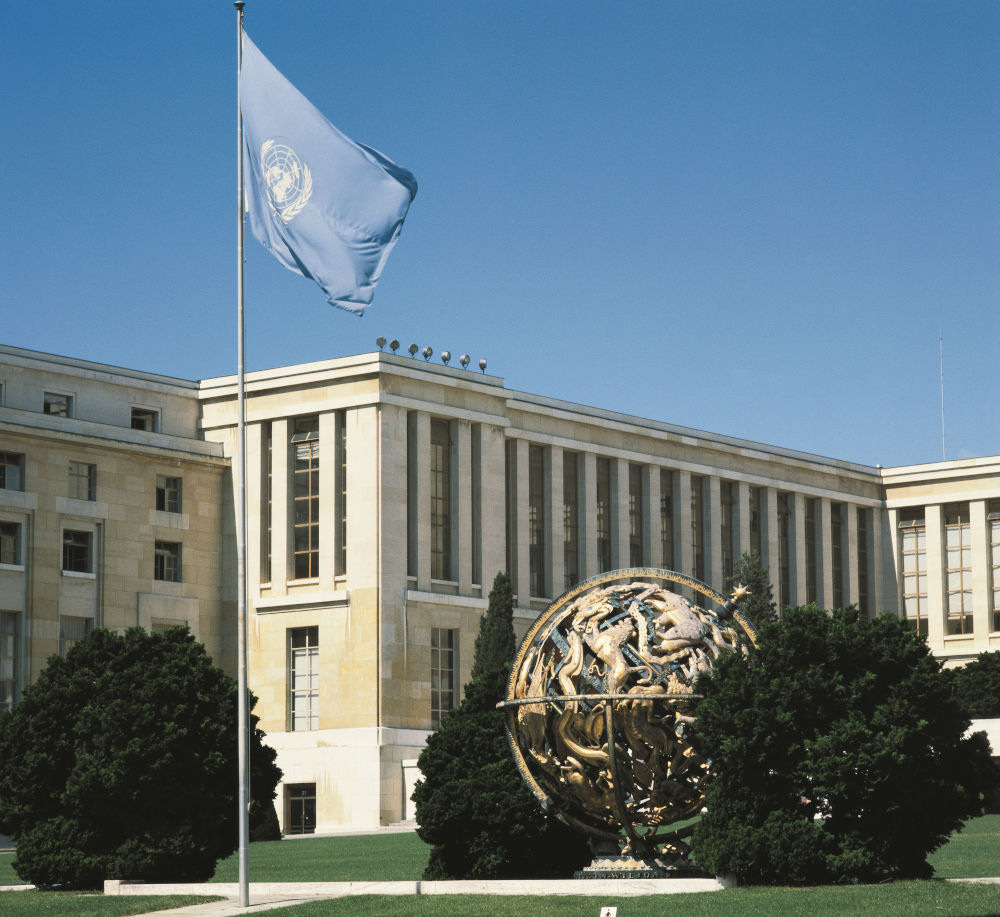
This beautiful property is surrounded by an enormous park which features an abundance of towering trees and colourful flowers and you may well encounter one or two of the resident peacocks strutting around and defending their territory with gusto.
I made my escape, and headed towards the Old Town and visited the Rath Museum to view exquisite collections of Swiss art. Built in 1824, the Rath, known as the temple of the muses, is located on Place Neuve, near to the city’s only remaining rampart walls.
Another nearby attraction is the Maison Tavel, the oldest house in Geneva, which is also a museum. The original property was constructed in the 12th century and was rebuilt in 1334 due to fire damage. Located on Rue due Puits St Pierre, this property is a fine example of Geneva’s history, with an impressive display of exhibits dating back to the medieval period.
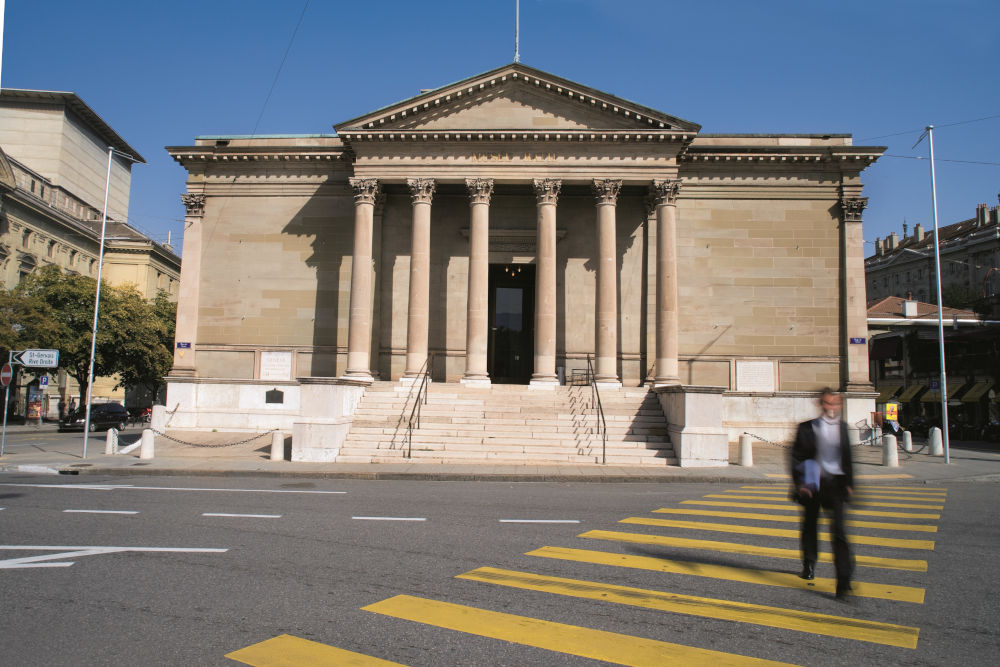
For a very special treat, I followed in the footsteps of Lord Byron and Shelley and visited the Château de Chillon, located at the eastern end of Lake Geneva near Veytaux, 98 kilometres from the centre of the city. In June 1816, Lord Byron, accompanied by Shelley, was sailing on Lake Geneva and decided to visit the Château.
Byron wandered around the castle’s dungeons and on hearing the tale of the imprisonment of the Genevois monk François Bonivard in 1530, he was inspired to write the narrative poem Prisoner of Chillon. Byron carved his name onto one of the pillars in the dungeon and it remains in place today.
Records show that the castle dates back to 1005 and in the 12th century it was home to the Counts of Savoy, members of the one of the oldest royal families in the world and rulers of Italy for 85 years. Peter II, known as the Little Charlemagne, was the last Count of Savoy to reside in the castle and was largely responsible for expanding the property.
London’s Savoy Theatre and the Savoy Hotel were both named in his memory. I wandered around the enormous main rooms and admired the four great halls and the opulent bedrooms, one of which was occupied by the Duke of Savoy and it is adorned with several beautiful examples of 14th century murals.
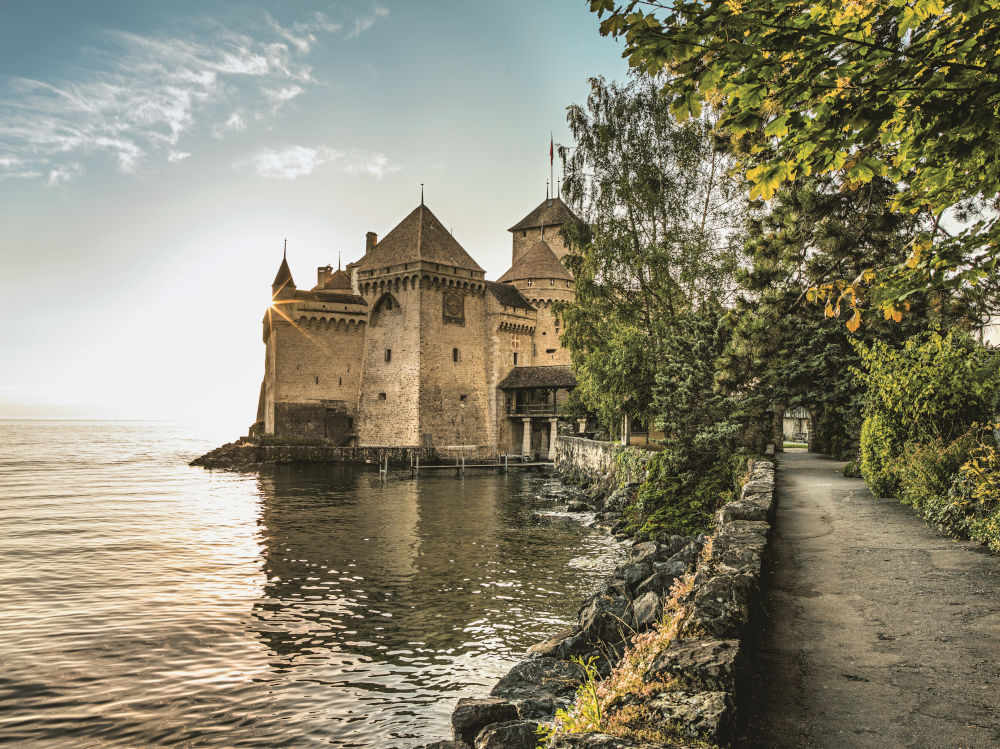
Another popular attraction is the beautiful Lavaux wine region, which covers 800 hectares and was recognised as a World Heritage Site by UNESCO in 2007. The Domaine Bovy, a family-owned wine estate located in Chexbres, is only a 20-minute drive from the Château Chillon and visitors to the winery are welcome.
Selected wines from Chasselas are housed in huge oak casks for up to six months after direct pressing, cold settling, the adding of yeast and fermentation between 18 and 20 degrees centigrade. The red wines are de-stemmed, fermented at 28-30 degrees centigrade, frequently pumped and macerated for ten days and are stored in the oak casks for six to eight months.
I visited the Bovy Cave, which is furnished with casks, each with a capacity of 2,500 to 5,000 litres and I needed no persuasion to take part in the popular wine tastings, held on a spacious veranda with spectacular views across Lake Geneva and the Alps.
To clear my head, I made my way back to the Old Town and took a brisk walk to the Place du Molard, the location of the Molard Tower, which dates back to 1591 and is the only remaining part of an enclosure built to protect the city. I strolled along the Rue du Rhône, a shopper’s paradise crammed with glittering jewellery shops with breath-taking displays of timepieces and other sparkling treasures.
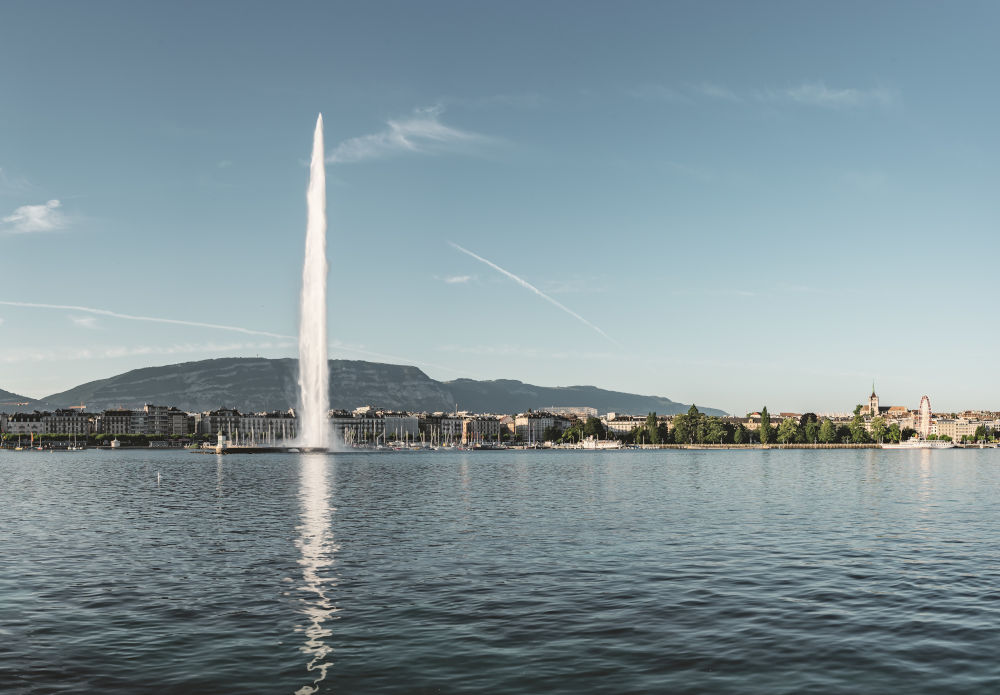
I passed by the chic boutiques including Chanel, Christian Dior, Gucci, Armani and Valentino and if, unlike me, you are enticed inside, be prepared to part with a substantial number of Swiss francs.
Should you be pondering on splashing out on a new wristwatch, consider visiting the Patek Phillippe Museum, located on Rue de Vieux Grenadiers. The exquisite collections, displayed over four levels, are simply dazzling. Exhibits include watches and enamels dating back to the 16th century and the fascinating history of Patek Phillippe, founded in 1839.
For sailing enthusiasts, Geneva’s spectacular Bol D’Or Mirabaud, the most important inland regatta in the world, takes place during the summer every year. More than 3,000 participants are expected to race to Le Bouveret accompanied by 600 sailboats.
You may prefer to visit the Geneva Festival, the largest tourist event in Switzerland, held in July and/or August and includes concerts, fun fairs, art and craft markets and a wide array of water sports including rowing and water-ski jumping competitions and life boat racing. Evening displays of fireworks, accompanied by music, light up the sky and children and ‘grown ups’ squeal with delight.
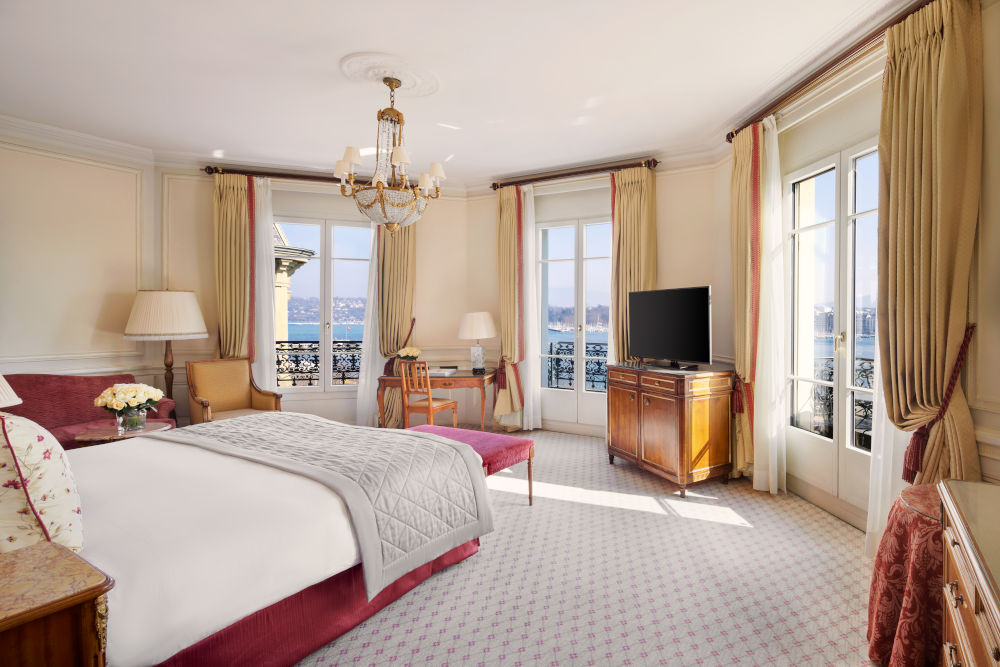
For the ideal place to stay consider the Beau Rivage hotel, located opposite the Jet d’Eau, on the Quai du Mont Blanc, a popular picturesque lakeside promenade. This grand property dates back to 1865 and offers the highest degree of comfort and service. Accommodations are spacious and luxuriously furnished with rich fabrics, the latest gadgets and amenities and fabulous panoramic views of the Lake, Mont Blanc and the old town.
Should you feel peckish, you won’t need to go far as Le Chat Botté offers outstanding French and contemporary dishes reflected in the achievement of a Michelin star. Or you may prefer the more informal dining experience at the Café du Soleil on Place du Petit Saconnex. Order the traditional Swiss fondue, made with a delicious cheese from Roche, a small village, north of Gruyére. Sample a tipple of Pinot Blanc Geneva, raise your glass and make a toast to the enchanting and genteel city of Geneva.
Factbox
Flight times from London Heathrow to Geneva are approximately one hour 40 minutes.
For more details of the featured accommodation visit beau-rivage.com and to learn more about Geneva’s attractions visit geneve.com.
Images, excluding accommodation, provided courtesy of Switzerland Tourism.












